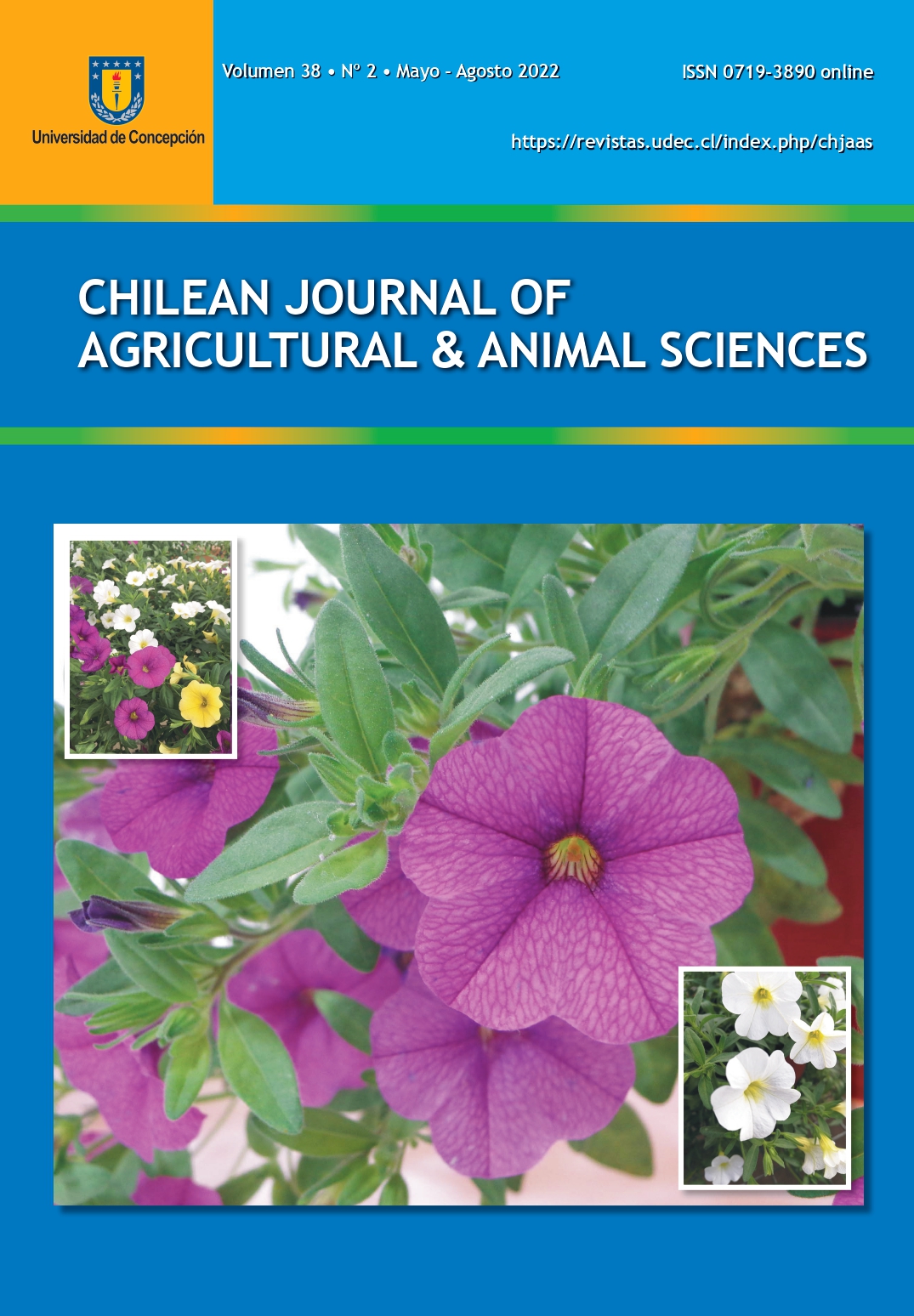ANTIBIOTIC-RESISTANCE PROFILE OF Staphylococcus aureus STRAINS IN THE PORK SUPPLY CHAIN
DOI:
https://doi.org/10.29393/CHJAA38-23ARVP50023Palabras clave:
Antimicrobial resistance (AMR), multidrug resistance (MDR), mecA gene, methicillin-resistant S. aureus (MRSA), vancomycin-intermediate S. aureus (VISA)Resumen
Staphylococcus aureus can develop antimicrobial resistance (AMR), which is one of the global health care concerns. It can colonize skin and nares of animals and humans, with the risk of entering the food supply chain. The aim of this study was to determine the antibiotic-resistance profile of Staphylococcus aureus strains through the pork supply chain. The epsilon test (Etest) and the disk diffusion method were used to determine the antibiotic susceptibility of fifty-five S. aureus strains isolated from pigs (n=28, nasal and skin), carcasses (n=12, surface of carcasses), and meat (n=15, pork chop and leg). An 83.6% of the isolates exhibited AMR, with a higher prevalence in pigs and a high rate of penicillin resistance. Ten antibiotics of seven classes were used to assess the susceptibility of S. aureus isolates. Multidrug-resistance (MDR) was detected in 38.2% of the isolates, being PEN-ERY-CIP-TET the most common resistance profile. Strains exhibiting oxacillin- and cefoxitin-resistance were mecA-negative, while one strain was identified as vancomycin-intermediate S. aureus (VISA). The results confirm that measures to control and mitigate AMR need to be implemented, particularly during the different animal production stages.
Descargas
Publicado
Cómo citar
Número
Sección
Derechos de autor 2022 Valeria Velasco, Alejandra Mallea, Ana María Bonilla, Jorge Campos, Pedro Rojas-García

Esta obra está bajo una licencia internacional Creative Commons Atribución 4.0.







